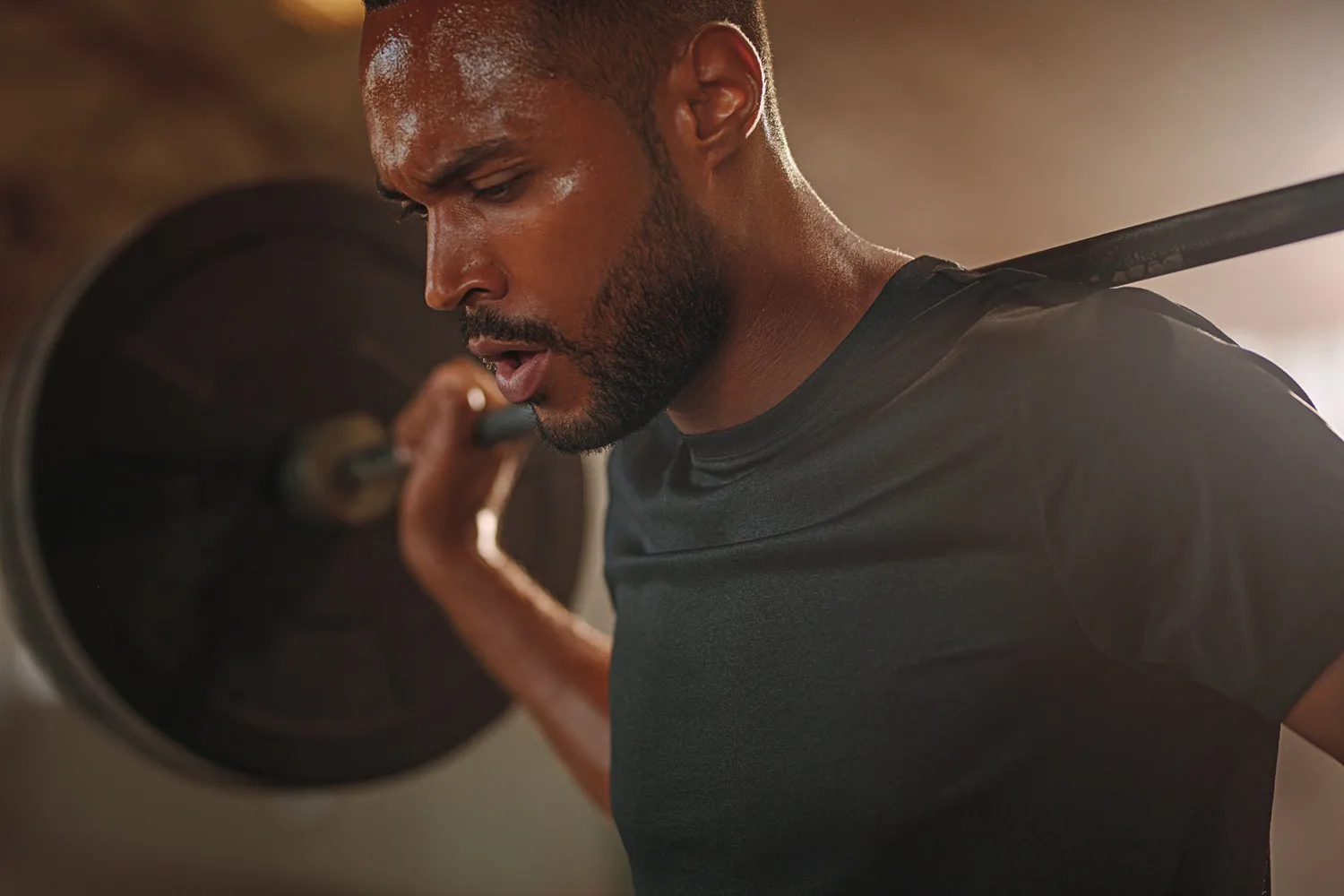Functional Training & Programming for Law Enforcement

Figuring out the right training methods for a physically and mentally demanding job like law enforcement can be tricky. If you can make time for the gym, what should you be working on to show up like a hero in your daily life?
Brandon Robb is the founder and head coach of HEROIC Athletics @heroic.athletics and Golf HEROIC @golf.heroic — he’s worked with athletes for over a decade. First responders (fire, police, military), golfers, Crossfitters, obstacle course racers, and hockey players all turn to him for performance gains, injury prevention, and competition prep. In this blog, he breaks down some reliable programming methods for police officers. Check out his sample warmups and training sets!

Change the Way You Train
Police Officers: Be On Top Of Your Game
The job of a police officer is both physically and mentally demanding, requiring long hours of work at obscure times that can leave you exhausted. To be effective in your duties, it’s important to train and prepare yourself for these demands by incorporating specific exercises into your weekly routine. Before we dive into specifics, though, let’s take a look at some general guidelines for training as an officer.
While there are many different types of training that can help you meet the demands of your job and become more effective at your work, you should aim to follow some key principles. At the risk of oversimplifying, there are 3 main categories of training to include daily/weekly in your program:
- Mobility Training: Don’t skip it! Working on your mobility ensures that you’re able to move in ways that can keep you out of harm’s way and mitigate common injury risks (knees, ankles, hips, shoulders, etc).
- Strength & Power Training: Developing the baseline strength to be effective in any environment or situation you may face.
- Cardiovascular Training: Developing the baseline capacity to work at an elevated heart rate in a multitude of situations.
Get Mobile
There is a difference between mobility and flexibility. Being mobile means you can move freely without pain, while being flexible means moving through a full range of motion.
For example, being able to perform a full split is considered “flexibility”, because it is not within normal ranges of motion for most people. Whereas being able to reach behind you pain-free with ease means you have good mobility.
The best ways to increase both mobility and flexibility are by stretching (stretching increases flexibility) and moving through your full range of motion with external loadings (weights). This will help improve muscle strength while increasing joint stability.
For both my clients and programs, I typically like a separate “stretching” section to be done at another point in the day (first thing in the morning, right before bed or during downtime like watching TV). This can be a great way to wind down, decompress and help relieve stress by doing some restorative stretching outside of the gym. This, along with breathwork exercises, has been proven to calm the nervous system and help promote recovery from brutal shifts at work or workouts in the gym.
I like to include mobility training as the first 10-15 minutes of a workout to prime the body for training. Let’s say that you have heavy squats and heavy shoulder presses in your workout. I may break it down like this:
Movement Prep/Mobility
Complete 3:00 to 5:00 on a cardio machine of your choice at an easy warm-up pace OR 5:00 to 10:00 Pushing + Pulling a Sled at an easy pace. The goal is to get your heart rate up slightly and increase your internal body temperature. Then, complete 2-3 rounds of the following:
6-8 plate kang squat
6-8/direction plate head circles
4-6/side plate reverse lunge with twist
6-8 yoga push ups
6-8/side single arm DB knee over toe split squat
6-8 wide stance seated good mornings
The goal is not to go crazy heavy here with each movement, but to use enough weight to assist and/or challenge your positioning in each movement. This will help not only warm you up, but make small mobility progression gains in your hips, knees, ankles and shoulders.
Train Your Strength
What are the best ways to build strength? What should police officers focus on in order to build strength properly for their job? The best way to break this down is to identify the different categories of movement.
- Upper Body Push
- Upper Body Pull
- Lower Body Squat
- Lower Body Hinge
- Lower Body Step
- Trunk Movements
- Jumping/Plyometrics
When designing your movements for strength, it’s important to include at least one movement from each category on a weekly basis. Rather than focusing on a “leg day” or a “chest day”, pick two strength-based movements for each workout — one upper body and one lower body.
Training like this improves your recovery, on-the-job readiness and prevents injuries.
Strength Programming
Your programming structure can vary greatly depending on your goals and work hours. For simplicity, let’s keep with the trend of squatting and pressing. You may break down the workout as follows:
3 sets
6-8 reps back squat @ tempo 20X1
Rest 2-3 minutes between each set
Take anywhere from 2-4 warm up sets to build to your working weight for the 3 sets. Each week you can progress this in a myriad of ways: add more weight, increase time under tension (tempo), or use a different squat variation. It’s important to have some type of squat variation week over week. After squats, move them into something like this:
3 sets
6-8/side filly press @ tempo 30X1
Rest 30s
12-15 incline bench dumbbell reverse flys
Rest 30s
8-10/side lean away dumbbell lateral raise
Rest 60-90s, then start again at the top of the giant set
This will help build strength and mobility in your shoulders from all angles. Again, the goal each week would be to progress by either adding weight, increasing time under tension, or perhaps increasing the difficulty of the movements by selecting slightly different movements. This training principle is called progressive overload. More on that here.
By this point in the workout, you should be anywhere from 30-45 minutes in and nearing the end of the session.

Work on Your Cardiovascular Endurance
I like to break cardiovascular training (conditioning) down into two main categories:
- Monostructural — Longer, steady-state activity involving one type of cardio work like running, rowing, biking, skiing, climbing, or hiking.
- Mixed Modality — Combining a number of movements and modalities together to challenge both the anaerobic and aerobic energy systems. Higher intensity, shorter duration workouts (anaerobic) and more sustainable intensity longer duration workouts (aerobic).
Conditioning Programming
It’s no secret that police officers need to run, but depending on your injury history running might not be available to everyone. Below are a couple examples of a monostructural, or single movement, conditioning session you would do at the end of our example workout.
OPTION A
4 Rounds
400m Run
OPTION B
4 Rounds
500m Row
For both of these options, your first round should be done at a 6-7/10 effort, gradually ramping up each round so that your last (4th) round is a 9/10 effort. You can progress this week over week with either intensity (run in a shorter time if possible) or volume (more rounds overall).
Be sure to check out this blog if you’re not sure how to measure intensity in a workout: What Is RPE? A Guide For First Responders
Option B may be a better alternative for you since rowing is lower-impact than running. If you have a foot or ankle injury, rowing is a good workaround.
Mixed modality conditioning sessions are often “more fun” to many and look much sexier for the gram, however there is extreme benefit to include BOTH in your training. Another good example in keeping with our squat/press workout could be as follows:
10 Minute AMRAP (as many rounds as possible)
5/side dumbbell overhead reverse lunge
10 push ups
200m Run OR 250m Row
Rest 30-45s before starting your next round
Be sure that each rep of each movement is executed with good form. This could mean slowing your pace down slightly. Remember, this is TRAINING and how you TRAIN is often how you PERFORM in the field. If your training is fast but sloppy, your performance in the field may reflect that. And sloppiness in the life of an LEO can have extremely negative consequences for everyone involved.
You can (and will) speed up your movements over time, but don’t do it at the expense of moving well. If you move like an asshole, you’ll likely get injured like one too.
I typically like to include 2-3 single modality sessions and 1-2 mixed modality sessions in a week. This can look like one day of sprints, the next day mixed modality, the following day mixed martial arts, then rest day, then perhaps a longer duration run, finishing off with your 5th day being a mixed modality.
Did you notice that I recommended you do mixed martial arts? MMA is not an area of personal expertise, but it’s something I recognize the value in and recommend that all the LEO’s incorporate into their weekly training regime. You only stand to benefit from learning the skills and techniques on grappling, striking, defense, etc.
When properly structured on a weekly basis, training in the gym 3-4 days per week combined with 1-2 days a week of MMA can produce an LEO that’s a force to be reckoned with.
When structured intelligently and executed properly, your training will result in increased performance, resiliency, lower injury risk and of course — you looking fit AF.
Find Your Perfect Training Plan
Sometimes all you need to reach your destination on your fitness journey is an expert guide. We've got you covered. Browse from thousands of programs for any goal and every type of athlete.
Try any programming subscription free for 7 days!
Want Training Tips, Exercise Guides & Knowledge Bombs Sent to Your Inbox?
Sign up for the FitNerd newsletter from TrainHeroic
Related articles
32 & Lifting: Reflections on My First Powerlifting Competition
Stepping onto the powerlifting platform at 32, just 13 months post-ACL surgery, Fred Ormerod chronicles his return to competitive sports after a 14-year hiatus. From shedding over 15kg to meet weight class requirements to confronting self-doubt and embracing the...
Active Recovery Strategies for Strength Athletes
Active recovery isn’t just about taking it easy—it’s a smart way to keep your body moving, boost circulation, and enhance performance without adding fatigue. While passive recovery has its place, low-intensity movement between sessions helps reduce stiffness and...
Intermittent Fasting for Shift-Working Athletes
Shift work can make fueling for performance feel like a constant battle. Between erratic schedules, disrupted sleep, and unpredictable training windows, sticking to a nutrition plan can be tough. Intermittent fasting (IF) offers a flexible approach that may already...

Join the community
Sign up for the latest training news and updates from TrainHeroic

About TrainHeroic
Made with love, sweat, protein isolate and hard work in Denver, CO
© 2023 TrainHeroic, Inc. All rights reserved.





